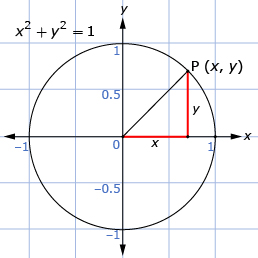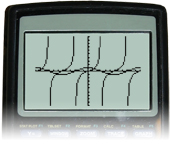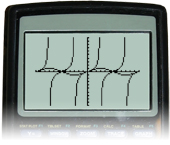Module 5: Lesson 1
Self-Check 2
Questions 6, 7, and C2 on pages 263 and 265 of the textbook
-
- The diagram could look as follows:

Based upon this diagram, the slope of the terminal arm is
- Because tan θ is found by taking the ratio of the length of the opposite side divided by the length of the adjacent side,

- Since y is equivalent to sin x and x is equivalent to cos x,
 is the same as
is the same as 
- Based on the answers in 6.b. and 6.c., you know that
 and that
and that 
- The diagram could look as follows:
-


- Because tan θ is found by taking the ratio of the length of the opposite side divided by the length of the adjacent side,
 however, because the length of the hypotenuse is 1 unit, you know that y = sin θ and that x = cos θ. This is why you can recognize that tan θ can be written as either
however, because the length of the hypotenuse is 1 unit, you know that y = sin θ and that x = cos θ. This is why you can recognize that tan θ can be written as either  or as
or as 
C2.
|
© 2012 Alberta Education

